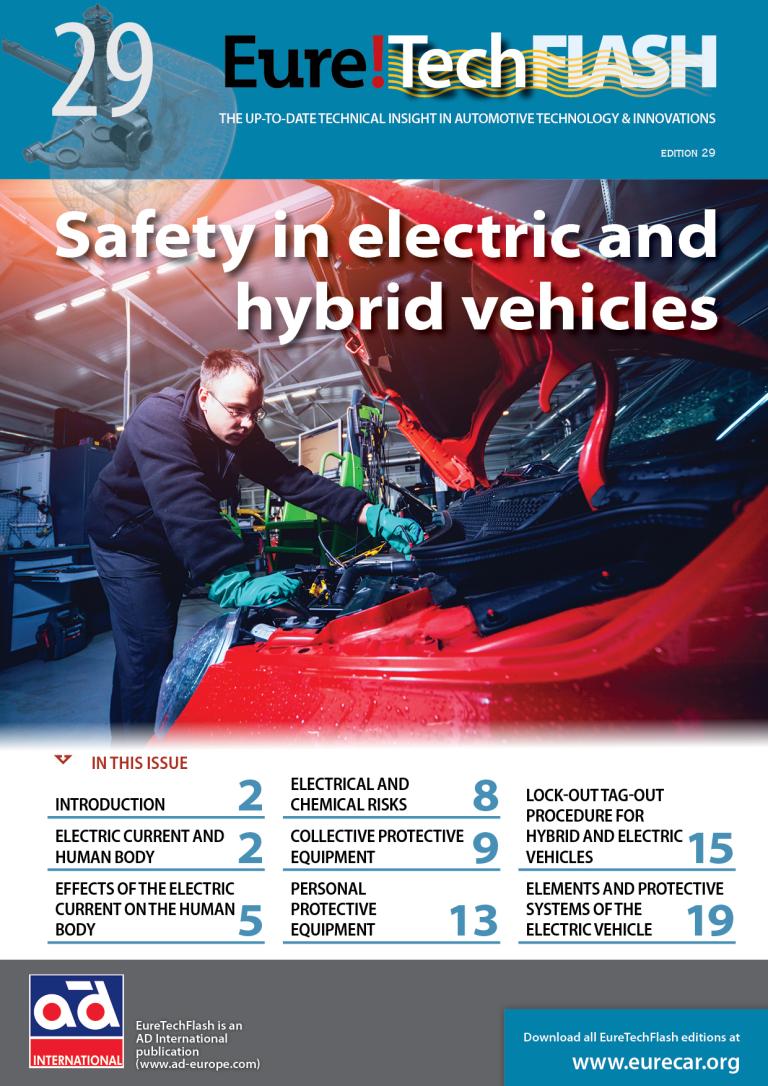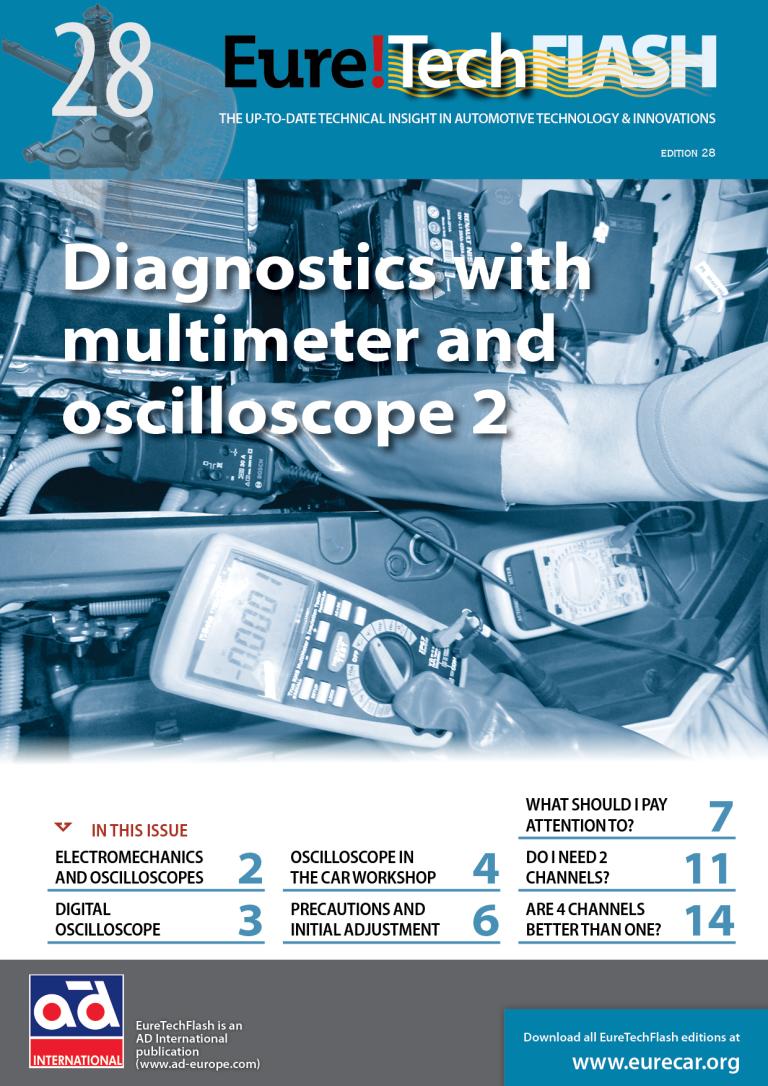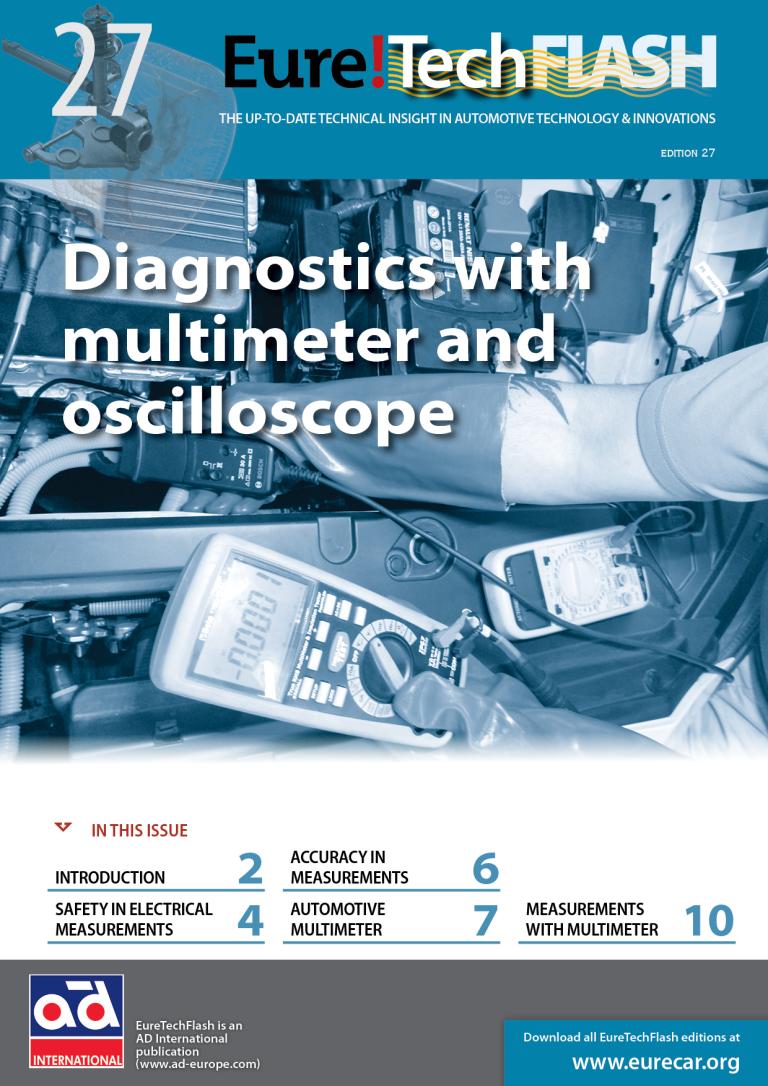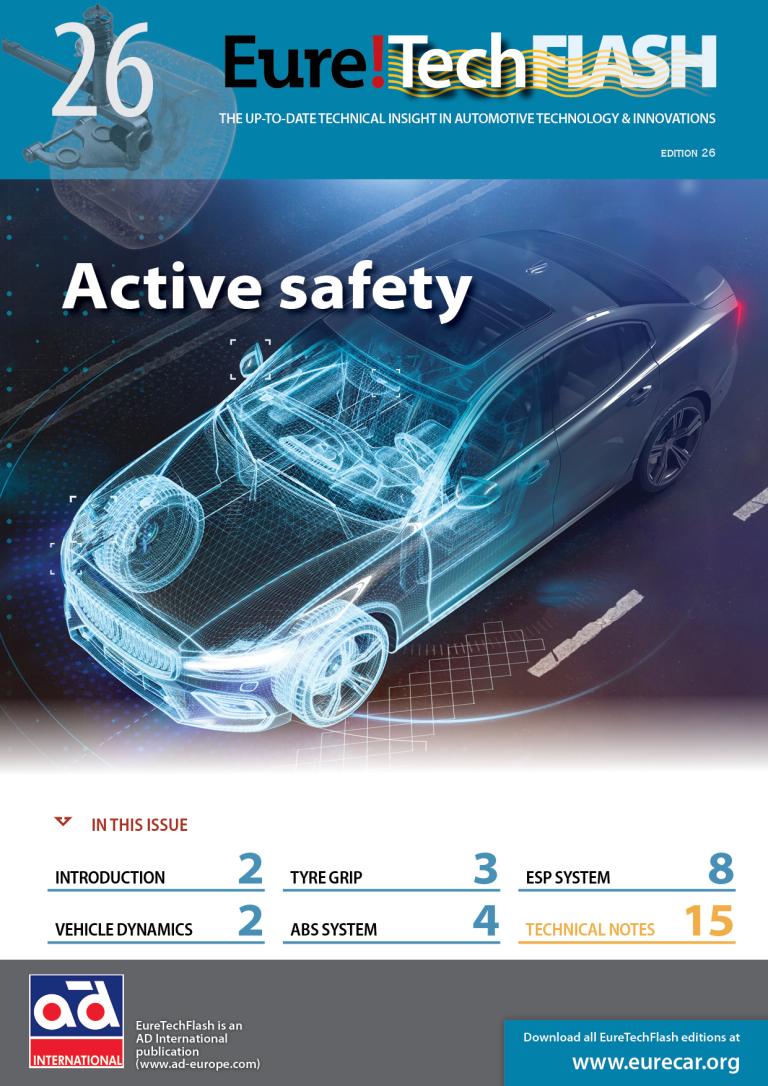Diagnostics with multimeter and oscilloscope 2
05.01.2026
The measurement of electric current is the method for diagnosing and checking the electrical systems, due to the intrinsic invisibility of both the power and electrical characteristics of the matter.
When the electric current values are invariable, we usually refer to them simply by their name, expressing that the voltage and intensity have a determined value, which is assumed to be constant when the circuit is active.
However, the operation of great part of the automotive electric systems is necessarily variable in order to adapt to the unpredictable driving conditions, climatology or changing safety and comfort requirements, which establishes a variable or even a discontinuous relationship between electrical values and time, called signals. The electric current variation in voltage, frequency, period, intensity, or the combination of the four of them, represents by itself the principle of operation regulation and the principle of data transmission, which allows the electrical systems to adapt to the physical variables related to its function.
The reaction speed, regulation accuracy or increase of transferred data entails the existence of increasingly changing or fast signals. The data interpretation and analysis of their evolution in numerical format is only possible, for the human being, in the past and with obvious speed limits. For centuries, these related data are represented using diagrams to make them easier to understand. Positive quadrant graphs of Cartesian axes (in honour of René Descartes 1596-1650) are the most used ones when time is one of the variables.
The need to represent electrical signals graphically is as old as the discovery of alternating current. Nevertheless, the first tool able to perform this function in real time didn’t appear until 1893, when André Blondel created the mechanical oscillograph.
The development of the first electrical oscilloscope had to wait until 1899 when forming plates and trace sweep were incorporated on the green phosphor screen, derived from the cathode-ray tube invented in 1897. Its usage was delicate and quite limited due to the difficulty to fix the image on screen for irregular pattern signals. This functionality didn’t arrive until 1946, when Howard Vollum and Jack Murdock presented a synchronised sweeping system with an adjustable voltage value, derived from the military technology developed during the Second World War for the sonar equipment of submarines.
First automotive oscilloscopes were developed in the ‘60s and discretely reached workshops in the three following decades, as they were conditioned by their high cost and limited functionality. Their purely analogue operation set aside their usage in the ignition system diagnostics. The operating voltages of 6V and 12V of the remaining electrical equipment of automobiles were insufficient for their representation on screen without an amplification system that, being analogue, would unavoidably alter the nature of the signal, distorting in an unpredictable way their graphical representation as a function of time.
It is true that in that period there was no major need for the diagnostics and repair, being the multimeter sufficient for the measurement of the few variable signals introduced by the newly incorporated systems in cars. After the invention of the silicon transistor, firstly electronics and then informatics would change the world and automobiles, simultaneously creating the need to represent graphically electrical signals of low voltage and high speed. The tool able to do this is the digital oscilloscope.
It is obvious that the expected operation of newly created electronic components and circuit can only be verified by means of a tool able to show with absolute accuracy their electrical “behaviour”. To do so, it must be much faster than the signals that are sought to be evaluated. Clearly this tool created for the check and development is used as a diagnostic tool, therefore, it must be equally valid for repairs.
Download file




